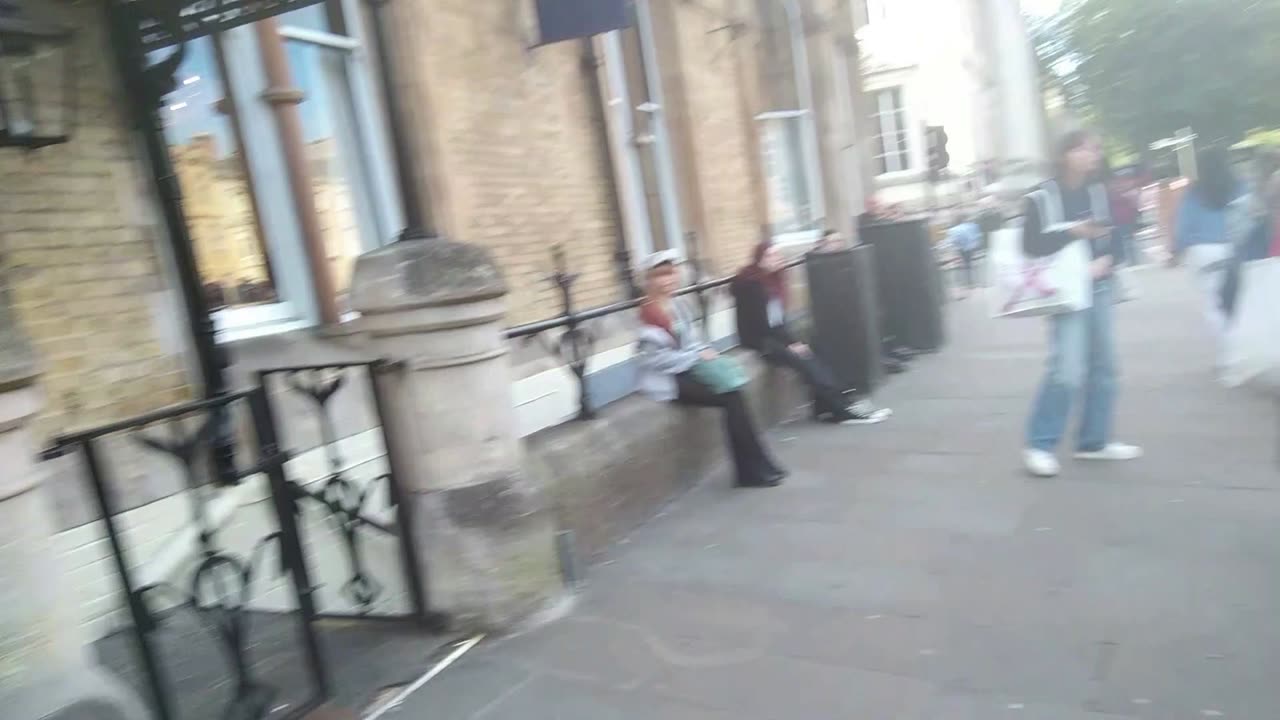Premium Only Content

VISIT ASHMOLEAN MUSEUM IN OXFORD CITY
The Ashmolean Museum of Art and Archaeology on Beaumont Street, Oxford, England, is Britain's first public museum.[3] Its first building was erected in 1678–1683 to house the cabinet of curiosities that Elias Ashmole gave to the University of Oxford in 1677. It is also the world's second university museum, after the establishment of the Kunstmuseum Basel in 1661 by the University of Basel.[4]
The present building was built between 1841 and 1845. The museum reopened in 2009 after a major redevelopment, and in November 2011, new galleries focusing on Egypt and Nubia were unveiled. In May 2016, the museum also opened redisplayed galleries of 19th-century art.
History
Broad Street
The museum opened on 24 May 1683,[5] with naturalist Robert Plot as the first keeper. The building on Broad Street (later known as the Old Ashmolean) is sometimes attributed to Sir Christopher Wren or Thomas Wood.[6] Elias Ashmole had acquired the collection from the gardeners, travellers, and collectors John Trade scant the Elder and his son, John Trade scant the Younger. It included antique coins, books, engravings, geological specimens, and zoological specimens—one of which was the stuffed body of the last dodo ever seen in Europe; but by 1755 the stuffed dodo was so moth-eaten that it was destroyed, except for its head and one claw.[7]
Beaumont Street
Wood-engraving of the Ashmolean c. 1845
The present building dates from 1841 to 1845. It was designed as the University Galleries by Charles Cockerell[8] in a classical style and stands on Beaumont Street. One wing of the building is occupied by the Taylor Institution, the modern languages faculty of the university, standing on the corner of Beaumont Street and St Giles' Street. This wing of the building was also designed by Charles Cockerell, using the Ionic order of Greek architecture.[9]
Sir Arthur Evans, who was appointed keeper in 1884 and retired in 1908, is largely responsible for the current museum.[10] Evans found that the keeper and the vice-chancellor (Benjamin Jowett) had managed to lose half of the Ashmole collection and had converted the original building into the Examination Rooms. Charles Drury Edward Fortnum had offered to donate his personal collection of antiques on condition that the museum was put on a sound footing.[11] A donation of £10,000 from Fortnum (£1.21 million as of 2023) enabled Evans to build an extension to the University Galleries and move the Ashmolean collection there in 1894. In 1908, the Ashmolean and the University Galleries were combined as the Ashmolean Museum of Art and Archaeology.[12] The museum became a depository for some of the important archaeological finds from Evans' excavations in Crete.[citation needed]
After the various specimens had been moved into new museums, the "Old Ashmolean" building was used as office space for the Oxford English Dictionary. Since 1924, the building has been established as the Museum of the History of Science, with exhibitions including the scientific instruments given to Oxford University by Lewis Evans, amongst them the world's largest collection of astrolabes.[13]
Charles Buller Heberden left £1,000 (£47,000 as of 2023) to the university in 1921, which was used for the Coin Room at the museum.[14]
In 2012, the Ashmolean was awarded a grant of $1.1m by the Andrew W. Mellon Foundation to establish the University Engagement Programme or UEP. The programme employs three teaching curators and a programme director to develop the use of the museum's collections in the teaching and research of the university.
Renovations
-
 1:41:29
1:41:29
The Illusion of Consensus
5 hours ago $12.47 earnedPart One of HEATED DEBATE: 24-year-old Rav Arora vs Mark Cuban on DEI in Corporate America
80K21 -
 2:26:24
2:26:24
Tommy's Podcast
6 hours agoE739: Very Short Stream
22K1 -
 2:46:55
2:46:55
TimcastIRL
8 hours agoDemocrats Launch DESPERATE MILLION Dollar Bid To Find "Liberal Joe Rogan" Project SAM | Timcast IRL
230K88 -
 2:51:42
2:51:42
Laura Loomer
7 hours agoEP123: Trump Admin Puts Harvard In Their Crosshairs
41.9K18 -
 6:29:41
6:29:41
MyronGainesX
1 day ago $32.00 earnedCharlie Kirk vs 400 Cambridge Students And Andrew Wilson vs Feminist
86.8K17 -
 9:11:39
9:11:39
Bitcoin Magazine
1 day agoThe Bitcoin Conference 2025 | Day 1 Livestream
235K15 -
 23:08
23:08
Producer Michael
14 hours agoWE FINALLY FLEW HIM TO BEVERLY HILLS! MILLION SUBSCRIBER GIVEAWAY
48.6K4 -
 1:29:30
1:29:30
Glenn Greenwald
11 hours agoThe ADL's Censorship Mission Revealed | SYSTEM UPDATE REVISITED
92.4K36 -
 7:28:51
7:28:51
Reolock
9 hours agoWoW Classic Hardcore | Levels for DAYS
47.2K1 -
 3:33:02
3:33:02
Barry Cunningham
8 hours agoPRESIDENT TRUMP WANTS TO HELP YOU BE RICH! AND THAT'S NOT A BAD THING!
66.2K17